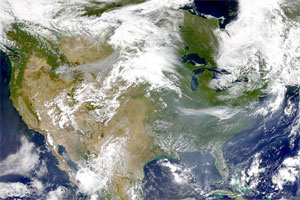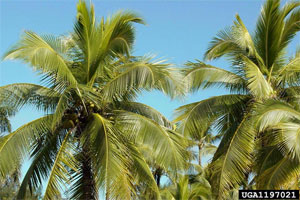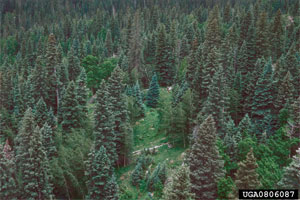|
Global wind patterns are caused largely from the imbalance of solar radiation between the equator and the poles.
This imbalance forces hot air near the equator to circulate towards the poles and a current of cool air to move from poles towards the equator.

SeaWiFS Project, NASA/Goddard Space Flight Center, www.nasa.gov
As we just mentioned, solar radiation causes the air near the equator to become hotter than the air near the poles.
As this air heats up, it rises and leaves a void near the surface of the earth which is then replaced with the colder air from the poles (Barnes et al. 1998).
The areas of rising hot air are called low pressure systems.
This air eventually stops rising and moves laterally towards the poles.
As this occurs, the air begins to cool and sink.
Areas of cool sinking air are called high pressure systems.
The revolution of the earth causes air masses to move at different speeds due to the mass being dragged by the surface.
This then causes the winds to veer in a particular direction. This is called the
Coriolus effect (Mackenzie et al. 1998). Specifically this means that air traveling southwards will verge to the right and northward-traveling air will verge to the left.
Within the tropical zone, between 30 degrees north and south, the cool air masses moving down become deflected to the right and form the northeast trade winds, while the cool air moving north towards the equator are deflected to the left and form the
southeast trade winds.

Charles T. Bryson, USDA Agricultural Research Service, www.forestryimages.org
At higher latitudes, between 30 and 60 degrees latitude, the westerly winds are formed by the sinking of the upper air masses.
More typically the westerly wind is referred to as the jet stream.
Much of North America, Europe and Asia are in this zone where the prevailing winds carrying moisture and storms move across continents from west to east.
This area typically has a large variability in weather.
This variability also allows for deciduous and coniferous forests, grasslands, and desert

Dave Powell, USDA Forest Service, www.forestryimages.org
Additional Information:
More Information about Winds
|
